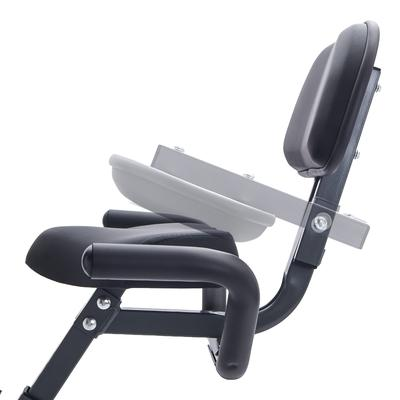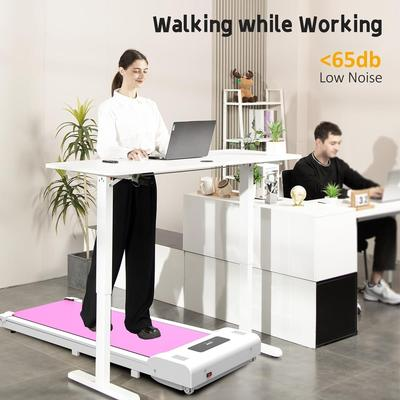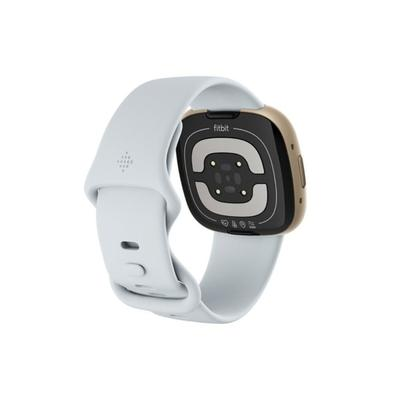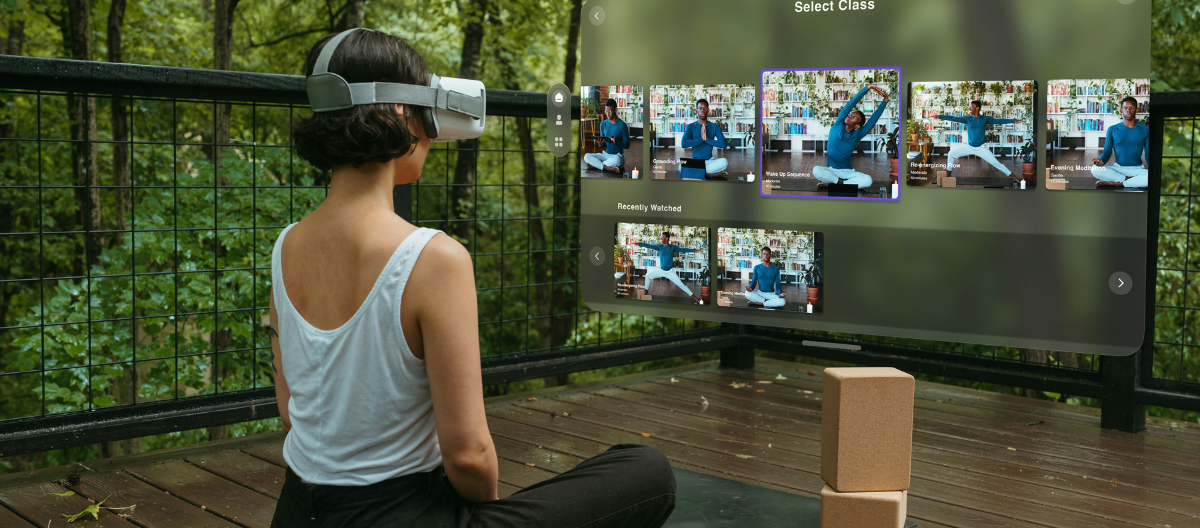Hey Diva dressing fans! When the items we love coincide with brands we work with, Diva dressing will use Paid Links in our articles. If you decide to click on these links and purchase the product, we get a small commission. Our Opinions Are Our Own, but we do add Paid Links as a way to offer these products at no added cost to our readers. Want to know more? Click Here to check out our Terms of Use anytime!
Fitness industry has experienced a shift toward inclusivity, with an emphasis on making workouts accessible to people of all ages, abilities, and fitness levels. This change has been driven by innovations in technology, fitness gear, and program design that prioritize accessibility and adaptability. Whether it’s through adaptive fitness programs, virtual platforms, or equipment designed for all body types, the goal is to ensure that everyone has the opportunity to live a healthy and active lifestyle. Let’s explore some of the key innovations that are making workouts more accessible and inclusive for all.
Virtual Fitness Platforms
One of the most significant developments in accessible fitness has been the rise of virtual platforms that allow people to work out from the comfort of their homes. Virtual fitness classes, apps, and streaming services have democratized access to exercise routines, trainers, and fitness communities.
Benefits of Virtual Fitness:
- Convenience: Virtual workouts are available on-demand, making it easy for people to fit exercise into their busy schedules.
- Variety: Platforms offer a wide range of workouts, from yoga and Pilates to HIIT and strength training, ensuring that individuals can find something that suits their preferences and fitness level.
- Adaptability: Many platforms offer modifications for various exercises, making them accessible to individuals with physical limitations or disabilities. Users can adjust the intensity, duration, and complexity of their workouts to match their needs.
Popular Virtual Platforms:
- Peloton: Originally known for its cycling classes, Peloton has expanded to include a variety of workouts like strength training, yoga, and meditation. Its live and on-demand classes cater to all fitness levels.
- Aaptiv: This audio-based fitness app provides guided workouts for all levels and includes adaptations for beginners, seniors, and people with physical limitations.
- Down Dog: This customizable yoga app allows users to tailor their sessions based on skill level, injury history, and goals.
Adaptive Fitness Programs
Another key innovation in making fitness accessible is the development of adaptive fitness programs designed for individuals with disabilities or physical challenges. Adaptive fitness focuses on modifying traditional exercises to accommodate different mobility levels, ensuring that everyone can participate in physical activity, regardless of their physical ability.
- Seated Workouts: These workouts are ideal for individuals with limited mobility or those who use wheelchairs. They focus on upper-body strength, flexibility, and core stability. Programs like Chair Yoga or Adaptive CrossFit provide modified exercises that can be performed while seated.
- Adaptive Sports: Sports like wheelchair basketball, handcycling, and adaptive skiing have become more popular and accessible through specialized equipment and training programs. Organizations like Adaptive Training Foundation create inclusive environments where people with disabilities can engage in high-performance athletic training.
- Personalized Fitness Plans: Many fitness apps and trainers now offer personalized plans for people with chronic conditions, injuries, or disabilities. These plans take into account the individual’s limitations and suggest modifications to ensure safety and effectiveness.
Wearable Technology and Fitness Trackers
Wearable technology has transformed the way people approach fitness, providing them with real-time data on their performance and overall health. Fitness trackers, smartwatches, and other wearable devices can be customized to suit a wide range of abilities, making them a powerful tool for accessible fitness.
- Health Monitoring: Devices like Apple Watch and Fitbit track heart rate, calories burned, steps taken, and even sleep patterns. These insights allow users to tailor their workouts according to their health needs, particularly for individuals with conditions like heart disease or diabetes.
- Adaptive Alerts: Wearables can be set to provide adaptive alerts, such as reminders to stand up or move around if someone has been sedentary for too long. This feature is particularly helpful for individuals with mobility challenges or those recovering from injury.
- Customized Goals: Fitness trackers allow users to set personalized goals based on their physical capabilities. For example, someone recovering from surgery might set a goal of walking a few steps a day, while someone with chronic fatigue may use the device to manage energy levels more effectively.
Inclusive Fitness Equipment
The development of fitness equipment designed with accessibility in mind is another innovation that has made workouts more inclusive. Traditional gym equipment often assumes that users have full mobility and strength, which can be a barrier for many people. Fortunately, modern fitness equipment is evolving to accommodate a wider range of needs.
- Resistance Bands: Unlike heavy gym machines, resistance bands are lightweight and can be used by people of all fitness levels, including those with limited mobility. They are versatile and can be used for strength training, flexibility, and rehabilitation exercises.
- Accessible Weight Machines: Many gyms now feature weight machines that are designed for use by people in wheelchairs or those with limited mobility. These machines often have adjustable seating, wider grips, and accessible controls, making them easy to use.
- Suspension Trainers: Equipment like TRX suspension trainers allows users to leverage their body weight for strength training. The intensity can be adjusted by changing the angle of the body, making it suitable for people of different fitness levels and abilities.
Group Fitness Classes with Modifications
Group fitness classes are an excellent way to stay motivated, but traditional classes often cater to specific fitness levels, which can leave some participants feeling excluded. In recent years, there has been a growing emphasis on providing group classes with built-in modifications for all participants.
- Multi-Level Instruction: Instructors in many group classes now offer multi-level instruction, where participants are given several options for each exercise. For example, a fitness class might include different variations of a squat to accommodate beginners, advanced participants, and those with knee injuries.
- Chair-Based Classes: Many studios offer chair-based fitness classes, particularly for seniors or people with mobility challenges. These classes focus on improving strength, flexibility, and cardiovascular health while remaining seated.
- Low-Impact Options: High-intensity group workouts like HIIT are being modified to include low-impact versions for those with joint pain, arthritis, or recovering from injury. These classes offer the same benefits as high-intensity workouts but without the strain on the body.
Fitness Programs for Mental Health
Physical fitness and mental health are closely connected, and innovations in fitness programs are increasingly focusing on holistic well-being. Fitness programs that combine mental and physical exercises are particularly beneficial for people experiencing anxiety, depression, or stress.
- Mindful Movement: Classes like Tai Chi, Qigong, and mindfulness-based yoga integrate physical movement with meditation and breathing exercises, helping to alleviate stress and improve focus.
- Therapeutic Fitness: Programs like Dance Movement Therapy (DMT) and Art of Living sessions use movement to help individuals cope with trauma, anxiety, or other mental health challenges. These classes focus on releasing tension, building emotional resilience, and fostering a sense of community.
Hybrid Fitness Models
The COVID-19 pandemic has accelerated the adoption of hybrid fitness models, combining in-person and virtual experiences. Hybrid models provide flexibility, making fitness more accessible to those who may not be able to attend in-person classes due to health conditions, time constraints, or geographical limitations.
Advantages of Hybrid Models:
- Flexibility: Participants can choose to attend in-person sessions or log in from home, depending on their needs.
- Tailored Experiences: Many hybrid programs offer personalized plans that combine virtual check-ins with in-person sessions to accommodate a wide range of preferences and abilities.
- Community Engagement: Hybrid models allow people to engage with fitness communities both online and offline, creating support networks that extend beyond physical spaces.
Here are some products you can try
Merax 2 in 1 Under Desk Electric Treadmill $284.49


Fashionable Under Desk Treadmill for Fitness $284.99

Fitbit Sense 2 Soft Gold Aluminum Blue Mist Strap Advanced Health & Fitness Smartwatch $289.49



